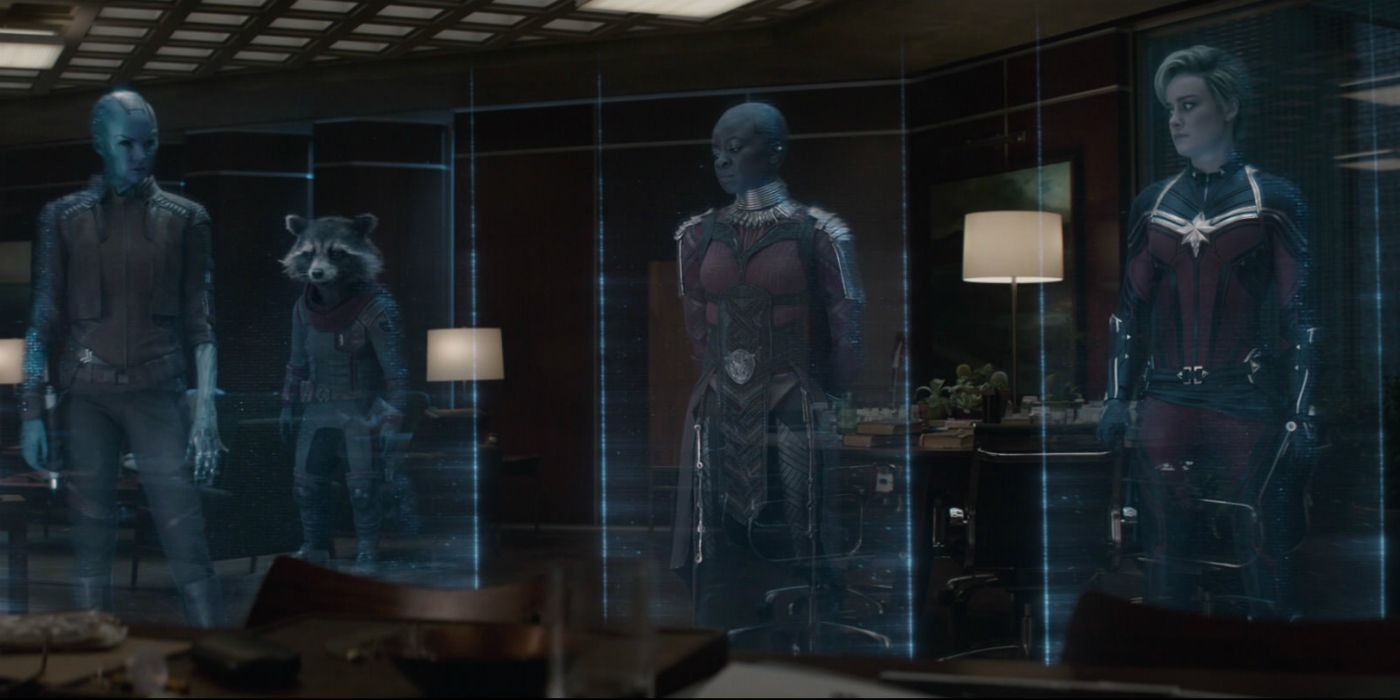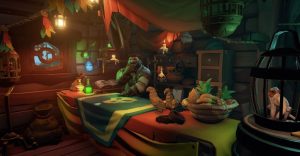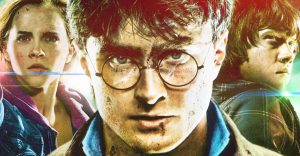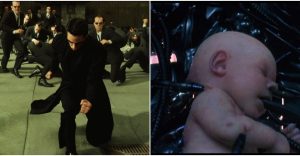Every MCU Easter Egg In Shang-Chi And The Legend Of The Ten Rings
Warning: This article contains SPOILERS for Shang-Chi and the Legend of the Ten Rings.
Marvel’s latest, Shang-Chi & the Legend of the Ten Rings, has dozens of MCU Easter eggs hidden throughout; here they are broken down. Created as the “Master of Kung Fu,” Shang-Chi is a somewhat unusual character in the Marvel Universe in that he traditionally doesn’t possess any superpowers at all. Rather, he’s simply a martial artist so skilled he can go toe-to-toe with gods and monsters. The MCU’s Shang-Chi is very different from the comics, where he’s not connected to the Mandarin at all, but rather to another crime lord, Fu Manchu, who Marvel don’t have the rights to – and probably wouldn’t use if they could, because he’s a problematic racist trope.
Marvel has toyed with introducing Shang-Chi to the big screen for over 20 years. He was one of the 10 properties Marvel originally planned to build the MCU upon, although he was dropped when the studio reacquired the film rights to Iron Man and headed in a very different direction. Still, for all that’s the case, there’s a sense in which Shang-Chi answers mysteries that have been there in the MCU from the beginning; it reveals the truth about the Ten Rings, a terrorist organization from the Iron Man films, and even features the real Mandarin after the fake version in Iron Man 3.
Like all MCU films, Shang-Chi is packed with Easter eggs and cameos. Some of them are easy to spot, others are a lot more subtle – here’s every Marvel Easter egg and notable pop culture reference in the movie.
Click here to watch Shang-Chi: 20 Things You Missed on YouTube.
A Nod To Simu Liu’s Role In Kim’s Convenience

Let’s start with one of the more amusing, tongue-in-cheek nods – in one scene Katy remembers her first meeting with Shang-Chi, when he expressed a vocal objection to being considered a Korean. This is a pun on Kim’s Convenience, where Simu Liu played a Korean character named Jung. Liu has suggested this was something of a challenge; as he observed on Twitter back in 2016, “everyone is Korean except for me, and I’m trying very hard to fit in.“
References To The Blip

Avengers: Infinity War and Avengers: Endgame were the two most spectacular events in the MCU; in the first film, the Mad Titan Thanos snapped his fingers and erased half the lives in the universe, and in the second, the Avengers brought everyone back. The five-year period between these two events has been dubbed “the Blip” in the MCU, and the Marvel Disney+ TV series have been exploring the chaos of the aftermath, with WandaVision focusing on the personal cost and The Falcon & the Winter Soldier on the geopolitical issues arising from the Blip. The Blip is referenced twice in Shang-Chi, once when Katy points out they live in a world where half the people on Earth can disappear. It’s referenced again more subtly on a poster outside her home. “Post-Blip anxiety? You are not alone,” the poster declares, suggesting there’s understandably still a lot of trauma in the world.
The Return Of The Ten Rings

The Ten Rings have been an established part of the MCU from the beginning, as the terrorist cell that captured Tony Stark in Iron Man was one of them. They were fleshed out as the trilogy continued, appearing numerous times in tie-ins such as the Iron Man 3 Prelude comic book that revealed War Machine was dealing with a particularly nasty terrorist plot on the other side of the world when the Chitauri invaded New York in The Avengers in 2012, explaining why he didn’t help out. They were subverted in Iron Man 3, but Shang-Chi serves as something of a course-correction on that, playing them straight and liberally using the logo. Attentive viewers will notice the Ten Rings logo has changed a little, because it originally featured Mongolian characters, drawing complaints from the Mongolian government because they resented their language being associated with a fictional terrorist group. Now, the characters are written in an ancient Chinese seal script, carefully chosen to be inoffensive synonyms for power.
A Returning Character From Spider-Man: Homecoming

The Ten Rings catch up with Shang-Chi on the bus, and their initial confrontation is observed by a familiar face. Played by Zach Cherry in Shang-Chi‘s cameo, the vlogger Klev first appeared in Spider-Man: Homecoming, when he asked Spider-Man to perform stunts as he filmed them, and he returns in Shang-Chi when a fight breaks out on his bus. “Yo, whaddup y’all, it’s your boy Klev, coming at you live on the bus,” he declares, before stating his intention to rate Shang-Chi’s martial arts as he apparently practiced when he was younger. It’s really something of a shame Klev doesn’t appear more, because he gets some great comedic lines in this welcome cameo.
Enter Razor Fist

In the comics, Razor Fist is a low-level thug who typically works for more prominent villains – including the likes of the Mandarin and the Hood. He’s gone head-to-head with a wide range of superheroes, such as Shang-Chi, Wolverine, and Deadpool, but – although he was initially treated as a dangerous threat – he’s increasingly been seen as light comic relief compared to more deadly foes. Shang-Chi‘s version is a little different, with only one of his hands replaced by a razor-stump, which is frankly a lot more practical; the comic book character has often been mocked with questions about just how he gets dressed when both his hands are blades. Amusingly, it’s soon clear the character still likes to call himself “Razor Fist,” with that name sprayed on his car.
The Jacket Move Homage To Jackie Chan

Shang-Chi is heavily inspired by Jackie Chan and Chinese wuxia films, and it wears its love of these martial movies on its sleeve – literally. The opening bus fight between Shang-Chi and members of the Ten Rings features a tremendous moment in which the hero uses his jacket as a weapon, a move that will be familiar to any Jackie Chan fans. All in all, Shang-Chi boasts some of the best fight choreography in the entire MCU to date, appropriate for the character who – in the comics – is called the Master of Kung Fu.
Shang-Chi’s Origin Has Changed – But Still References The Comics

Shang-Chi’s origin story has completely changed from the comics, but certain elements of it still link to his first appearance in Special Marvel Edition #15. There, he was brought up by the crime lord Fu Manchu as an assassin but believing his father to be a humanitarian who only killed evil people. He did indeed complete his first mission for his father – before being told the truth about Fu Manchu being evil, and going rogue. The similarities end there, though, because Shang-Chi’s first mission in the MCU was a lot more personal.
The Golden Daggers

Shang-Chi seeks out his sister Xialing at the Golden Daggers Club in Macau, unaware it is a superhuman fight club or that Xialing owns it. In the comics, the Golden Daggers were a criminal organization led by Shang-Chi’s sister (named Leiko in the comics), who established them as a rival empire to her father’s. Shang-Chi originally thought they were working for Fu Manchu, but gradually learned he was caught between two rival criminal gangs.
Black Widows & Extremis Soldiers

Keep a close eye on the Golden Daggers fight club, because it includes a number of cool Easter eggs. One particularly interesting fight is between an Extremis-powered soldier from Iron Man 3 and a Black Widow, giving a sense of the superhuman scraps that take place there. The Black Widow is a character named Helen, played by stunt performer (and World Wushu Champion) Jade Xu, and it seems she has found her way to Macau after being freed from the Red Room’s control in Black Widow. The Extremis soldier is especially curious, as they were all supposedly killed, so it’s possible someone has begun experimenting with Extremis again.
The Return Of The Abomination

Of course, the star attraction of the Golden Daggers is the Abomination, a classic Hulk villain who’s changed substantially since The Incredible Hulk. Tim Roth’s Emil Blonsky was exposed to Gamma radiation in The Incredible Hulk, transforming him into a monster who rampaged through Harlem, but according to the Marvel One-Shot The Consultant he was viewed as a hero by the military, with the World Security Council even wanting him to get involved with the Avengers Initiative. SHIELD knew better, and manipulated events so as to ensure the Abomination was dropped from their potential Avengers roster, and (with the exception of one episode of Agents of SHIELD), he hasn’t been seen or referenced since – until now. The Abomination now sports a much more comic-book-accurate appearance, clearly having mutated significantly over the last decade. It’s difficult to say for certain, but when he is teleported away he appears to be going to the Raft, a prison for superhumans introduced in Captain America: Civil War. Blonsky will return in the She-Hulk Disney+ TV series.
Enter Wong, Master Of The Mystic Arts

The Abomination’s opponent in the Golden Daggers is Wong, one of the more prominent members of the Masters of the Mystic Arts. It’s unclear why Wong is at a fight club, but he appears to be a regular and has a friendly relationship with the Abomination. Wong is playing a major role in Phase 4, likely because he’s operating from Kamar-Taj, meaning he’s responsible for overseeing mystical events across the entire world – while Doctor Strange appears to have become the guardian of the Sanctum Sanctorum in New York, thus being geographically limited. Wong returns in a delightful cameo in Shang-Chi‘s mid-credits scene.
A Madripoor Flag On The Wall

It’s easy to miss, but the Madripoor flag is painted on the walls in Xialing’s fight club. In the comics, Madripoor is basically the Mos Eisley Cantina of the Marvel Universe, a notoriously corrupt and crime-ridden island nation. It made its MCU debut in The Falcon & the Winter Soldier when the titular heroes traveled to Madripoor and learned Sokovia Accord fugitive Sharon Carter had made her home there. Interestingly, Marvel set up a promotional Welcome to Madripoor website that did initially feature Ten Rings Easter eggs; they were swiftly removed.
The Death-Dealer Is Another Shang-Chi Villain From The Comics

In the comics, Li Ching-Lin was an MI6 agent who secretly worked for Shang-Chi’s father, Fu Manchu. A skilled and brutal warrior, he was anointed Death-Dealer by Fu Manchu and became one of his most prominent henchmen, clashing with Shang-Chi on countless occasions. The MCU has completely reinvented Death-Dealer, who is apparently a key member of the Ten Rings, responsible for training them. He was a harsh mentor to Shang-Chi but did not train his sister Xialing, as she was a girl and women were not allowed to be members of the Ten Rings.
Wenwu’s Fortress In Hunan

A captured Shang-Chi and his friends are taken to Wenwu’s fortress in China’s mountainous Hunan province. This is based on Fu Manchu’s home in Special Marvel Edition #15, which was indeed situated in Hunan, and it has returned in recent Shang-Chi comics. Recent Marvel comics have rewritten Shang-Chi’s history, naming this as the House of the Deadly Hand, but these retcons were carried out while the film was in production so are unlikely to be important at this stage.
Explaining The Mandarin Of Iron Man 3

Shang-Chi introduces viewers to Wenwu, the true leader of the Ten Rings, whose identity was appropriated by actor Trevor Slattery in Iron Man 3 when he dreamed up the character of the Mandarin. Slattery’s Mandarin was a composite of a hundred legends, but Wenwu is the real deal, a complex figure who has been tortured by grief over the loss of his wife years ago. The film spends a surprising amount of time explaining the Mandarin twist, with Wenwu even discussing it at length, mocking the citizens of the United States for being so terrified of “the Mandarin” – amused so many people were afraid of him.
Wenwu’s Other Names Reference The Mandarin Of The Comics

According to Wenwu, he has been known by many names over the millennia; the Warrior King, Master Khan, and the Most Dangerous Man on Earth. The second of these titles is the most important, because in the comics “Master Khan” is indeed an alias of the Mandarin. In the comics, it denoted a connection between the Mandarin and Genghis Khan, but in the MCU the timeline may instead hint Genghis Khan was himself Wenwu.
The Return Of Trevor Slattery

Down-on-his-luck actor Trevor Slattery returns from Iron Man 3, once again played by Ben Kingsley. As seen in the Marvel One-Shot All Hail the King, Slattery was broken out of prison by the Ten Rings, with Wenwu intending to kill him for the audacity of appropriating his identity in this way. Slattery apparently forestalled the execution by launching into a terrified performance of Macbeth, and was thus spared death, instead becoming Wenwu’s jester. Trevor plays a surprisingly important role in Shang-Chi, helping the heroes get to the mystical realm of Ta Lo before Wenwu, and he even survives the battle with the Dweller-In-Darkness in hilarious fashion.
Ta Lo Originates From The Comics

Ta Lo exists in the comics, where it is a small pocket dimension numbered among the so-called “God Realms.” This is a seriously deep cut into Marvel lore, with Ta Lo only appearing in a single issue – Thor #301 – and actually explored more in Marvel handbooks than in the comics themselves. According to these handbooks, there are five interdimensional nexuses that lead to Ta Lo, each found at the foot of a sacred mountain. It is home to the Xian, a race akin to the Asgardians who have inspired China’s Taoist gods; Shang-Chi wisely ditches this idea, aware it would be culturally insensitive.
The Gate To Ta Lo Opens Only On Qingming Jie

As noted by Mateo, Wenwu claims the gate to Ta Lo opens only on Qingming Jie, allowing viewers to precisely date Shang-Chi in the MCU timeline. Because this happens after Avengers: Endgame, Shang-Chi must be in 2024, and this Chinese festival day will happen on April 4 that year. The events probably take place from approx. March 29 through to April 5, which means the timeline for MCU content post-Endgame currently looks something like this:
- Loki
- Marvel’s What If…?
- WandaVision
- Shang-Chi & the Legend of the Ten Rings
- The Falcon & the Winter Soldier
- Spider-Man: Far From Home
The Creatures Of Shang-Chi & The Legend Of The Ten Rings

Shang-Chi features a wealth of mythical Chinese creatures, including:
- The unicorn-like qílín, the horned creature with the body of a deer and the tail of an ox, which lives in places of peace and serenity and only appears in the real world to presage the emergence of a great, benevolent ruler. Ta Lo is presumably supposed to be the origin of the qílín.
- There’s also a glimpse of the fènghuáng, an immortal bird sometimes incorrectly called the Chinese Phoenix, another auspicious creature. Interestingly, both the qílín and the fènghuáng are symbols of balance, incorporating both the male and female elements; balance is very much the theme of Shang-Chi, so the presence of these two mythological animals is very appropriate indeed. Both the qílín and the fènghuáng are associated with Ta Lo in the comics.
- The beautiful húlijīng, a mythical nine-tailed fox that has absorbed the natural energy of the world over many years.
- There are also shíshī, the Chinese guardian lions, sometimes called foo dogs, who assist the residents of Ta Lo in their battle against the Ten Rings.
- The longma is a legendary winged horse with dragon scales, another creature whose presence is symbolic of the rise of a sage ruler.
- The most prominent creature in Shang-Chi is Trevor Slattery’s Maurice, a dìjiāng – often seen to represent cosmic confusion. It makes sense a dijiang would associate itself with Trevor.
The Great Protector Is A Nod To Chinese Mythology

Dragons do exist in Marvel Comics, the most famous being the alien Makluan dragon creature Fin Fang Foom; however, the Great Protector seen in Shang-Chi is nothing like a Makluan. Rather, the creature is based on Chinese mythology, where dragons – or lóng – serve as protectors rather than destroyers, and the dragon has become a symbol of status and power. Shang-Chi is likely set in the year 2024, which seems amusingly appropriate, given that is the Year of the Dragon in the Chinese Zodiac.
The Dweller-In-Darkness & Its Soul Eaters

The Dweller-in-Darkness is lifted from the comics, although he’s been adapted quite significantly. In the comics, he is one of the universe’s Fear Lords, beings who gain sustenance from the fear of creatures on other planes, and he considers the more famous comic book Fear Lord, Nightmare, to be his cousin. Dweller-in-Darkness was a terrible threat to the Earth millennia ago, in the days of ancient Atlantis, and derived great pleasure from the conflict between the Eternals and the Deviants that led to the sinking of that continent. He grew too powerful, however, and caught the attention of the Atlantean sorceress Zhered-Na, who cast the Dweller-In-Darkness into an eternal slumber from which he only awoke in the modern era – only to find himself contested now by Doctor Strange. The MCU’s Dweller-in-Darkness has been changed a lot, and is now some sort of demon, blended with the Chinese myths of the Wangliang, a malevolent spirit in Chinese folklore. The Soul Eaters serving the Dweller-in-Darkness in Shang-Chi do exist in the comics, but they too have been heavily modified. In the comics, a Soul-Eater attaches itself to a victim and preys upon them for a lengthy period of time, consuming their soul little by little. The process of soul extraction is vastly accelerated in Shang-Chi.
The Holo-Communicators From Avengers: Endgame

Shang-Chi‘s post-credits scene reveals the superhero holo-conferences conducted by Black Widow during the Blip (as seen in Avengers: Endgame) are still ongoing. This is the first time there’s been a hint Earth’s protectors are still organized in Phase 4, and it’s likely Wong only called in the people he wanted involved in discussions about Shang-Chi’s Ten Rings; Captain Marvel, with her knowledge of alien worlds and civilizations, and the scientific mind of Bruce Banner. Neither has ever seen anything like this before, with Banner confirming they’re not Vibranium.
Bruce Banner’s Arm Is Injured

Something has clearly happened to Bruce Banner between Avengers: Endgame and the events of Shang-Chi; the last time he was seen, the Banner and Hulk personas had combined into “Professor Hulk,” and he was stuck in that form permanently, but now he’s back as a human being. This will probably either be explained by the upcoming She-Hulk Disney+ TV series, or else it will be setup for it, explaining why Banner’s blood is used in a transfusion for his cousin Jennifer Walters. His right arm is still in a sling, meaning the injury he sustained when he used the Infinity Gauntlet hasn’t been healed. It seems Marvel are honoring the Russo brothers’ wishes for the Hulk to have a permanent injury; “It’s permanent damage,” Joe Russo explained in one interview. “The same way it was permanent damage with Thanos. It’s irreversible damage.“
Wong Name-Drops Kamar-Taj

Wong references Kamar-Taj during the holo-conference, revealing the Masters of the Mystic Arts were able to detect whatever “signal” was emitted from the Ten Rings at the moment control of them passed over to Shang-Chi. This is pretty impressive, given Ta Lo was described as being in an entirely different universe, meaning the energy surge generated by them must have traveled through the entire Multiverse.
The “Hotel California” Theme Is Completed

The MCU has always loved to incorporate classic music into its films, and the Eagles’ “Hotel California” crops up throughout Shang-Chi. The theme of the song works perfectly for the movie, as Shang-Chi has attempted to “check out” of the family drama, but he can never leave. The mid-credits scene of Shang-Chi and the Legend of the Ten Rings puts a more positive spin on this, though, because now Shang-Chi has checked in to the world of superheroes, and his life will never be the same again.
- Eternals (2021)Release date: Nov 05, 2021
- Doctor Strange in the Multiverse of Madness (2022)Release date: May 06, 2022
- Thor: Love and Thunder (2022)Release date: Jul 08, 2022
- Black Panther: Wakanda Forever/Black Panther 2 (2022)Release date: Nov 11, 2022
- The Marvels/Captain Marvel 2 (2023)Release date: Feb 17, 2023
- Ant-Man and the Wasp: Quantumania (2023)Release date: Jul 28, 2023
- Guardians of the Galaxy Vol. 3 (2023)Release date: May 05, 2023
About The Author

















